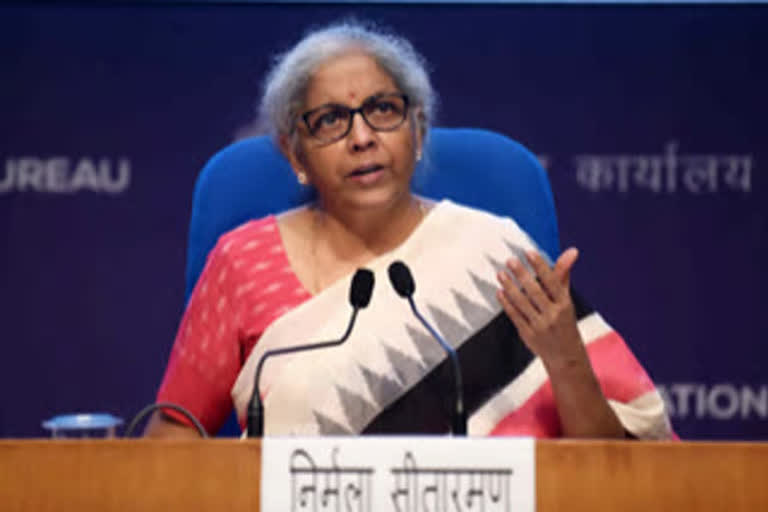New Delhi:Despite the clear risk of an electoral backlash, Prime Minister Narendra Modi’s government has refused to cut down the excise duty on petrol and diesel that may help soften the retail prices, which are at a record high.
Finance Minister Nirmala Sitharamam blamed the previous UPA government for shifting the burden to future generations by issuing oil bonds for keeping the prices low during its tenure.
A charge denied by Congress, which says the government has earned several times more money from the sector than its oil-bond repayment liabilities.
Sitharaman called the UPA’s policy of issuing oil-bonds a ‘trickery’. A charge countered by the Congress, which accused the NDA government of falsehood as it spent over Rs 73,000 crore on bond payment in seven years while it collected Rs 22.34 lakh crore from the petroleum sector during the same period.
The shrill debate is all about the oil-bond servicing obligation that has been estimated at Rs 2.42 lakh crore between 2014-15 to 2025-26 and their impact on petrol and diesel prices today.
Facts about UPA era oil-bonds
According to a report by Kirit Parekh committee, the UPA government issued oil bonds worth Rs 1.42 lakh crore between 2005-06 to 2008-09 to Oil PSUs so that they can cover the under-recoveries, as they were not allowed to pass on the burden of high crude oil prices to consumers.
During the last seven years of Prime Minister Narendra Modi’s government, a total of Rs 73,696 crore (interest Rs 70,195 crore & principal Rs 3,500 crores) has already been paid for servicing of oil bonds, as per the data shared by the ministry of finance with ETV Bharat.
An amount of over Rs 1.68 lakh crore, (Rs 1.31 lakh crore principal and Rs 37,340 crore interest) is due for repayment between this fiscal and FY 2025-26, taking the total burden of servicing the oil bond between 2014-15 and 2025-26 to Rs 2.42 lakh crore.
Last year’s excise collection enough to pay oil bonds
A back-of-the-envelope calculation shows that the total oil bond repayment requirements from 2014-15 to 2025-26, which has been estimated at Rs 2.42 lakh crore, is actually less than two-third of the Centre’s excise duty collection from the petroleum sector last year that has been estimated at some Rs 3.72 lakh crore by the Petroleum Planning & Analysis Cell.
Read: Sensex soars over 400 pts to scale fresh lifetime peak; Nifty crosses 16,800
As per these numbers, the reasoning offered by finance minister Sitharaman does not cut much ice. On the other hand, Congress leader Ajay Maken’s charge of the Centre earning Rs 22.34 lakh crore from the petroleum sector cannot be taken at the face value either.
Petro gold mine for Centre & States
An analysis of the latest data available on Petroleum Planning and Analysis Cell’s (PPAC) website shows that the total contribution of the petroleum sector to the central government in the last seven years was Rs 22.34 lakh while States and Union territories earned Rs 13.84 lakh crore.
It suggests that the Centre accounts for nearly 62%, and States and UTs account for little over 38% of the total collection of Rs 36.18 lakh crore from the petroleum sector but that is not the complete picture.
A deeper scrutiny of official data would tilt the balance in States’ favour as they receive a sizable part of the taxes and duties collected by the Centre from the petroleum sector as their share in the Union’s divisible pool.
